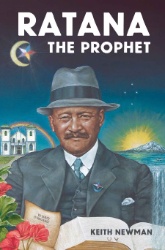Risk-taking in clubs explored
Risk-taking in clubs explored
A Victoria University study into Wellington’s clubbing scene has found the most ‘dangerous’ illegal drugs are not the ones causing the most concern amongst club-goers.
Criminology Lecturer, Dr Fiona Hutton, investigated what goes on within Wellington’s youth scene - clubbing, dance parties, alcohol and other drug use, social groups, relationships and fashion – to uncover what type risk-taking behaviour is taking place.
Dr Hutton undertook qualitative interviews with 33 clubbers, within the 18-25 age range, and also consulted Wellington club owners and managers.
Dr Hutton says the young clubbers, some of whom were strongly opposed to being portrayed as users of illegal drugs, were mostly concerned about the lower-end, more affordable drugs available, including alcohol, herbal highs and GHB.
“The public are often led to believe that illegal drugs, such as Ecstasy, cause the biggest harm amongst club-goers. The reality is that, due to the young age of most clubbers, they are not able to afford these substances on a frequent basis, as a ‘pill’ can cost between $65-80.
“Although the higher-end drugs are certainly destructive, the clubbers highlighted other drugs with which they encountered more frequent risk-taking behaviour.”
GHB was a drug that clubbers identified as risky as it is affordable and easy to get hold of. GHB is a powerful, rapidly-acting central nervous system depressant and can put people in a very vulnerable state, especially when mixed with alcohol. A majority of respondents felt that GHB use for young women in particular put them in vulnerable positions especially where safe sex was concerned.
‘Herbal highs’ were also identified as a concern. Respondents stated that because ‘herbals’ were legal there was the perception that they were safe which was misleading and dangerous, since they can contain a high chemical component. Respondents commonly mixed ‘herbals’ with alcohol and stated that they made them feel like drinking a lot of alcohol. Every respondent expressed concern about the lack of information/education about ‘herbals.’
Alcohol was described by all respondents as a substance that increased their risk-taking behaviour, especially in relation to safer sex choices and personal safety. Respondents tended to mix alcohol with ‘herbals’ or when the effects of illegal drugs were wearing off.
“It is also important to note that the clubbers interviewed felt that the stereotype of ‘drug-crazed’ clubbers was wrong. In fact, to be seen to be out of control through alcohol and/or drug use was not acceptable and was perceived to be ‘uncool’.”
Dr Hutton, who has written a thesis on social behaviour within the British clubbing scene, says her research will provide valuable information for Wellington’s service providers.
“This snapshot of youth and club culture helps to establish which safety and health issues we could direct more attention towards.”
Dr Hutton is one of seven academics in the Institute of Criminology in the School of Social & Cultural Studies at Victoria University. Victoria offers New Zealand’s only criminology major at undergraduate and postgraduate level.


 Keith Newman: Revised Edition Of Ratana Biography Highlights Lasting Legacy
Keith Newman: Revised Edition Of Ratana Biography Highlights Lasting Legacy Environmental Defence Society: Groundhog Day, New Book Shows History Is Repeating Itself
Environmental Defence Society: Groundhog Day, New Book Shows History Is Repeating Itself NZEI Te Riu Roa: Mandated Single Approach To Reading Will Not Work
NZEI Te Riu Roa: Mandated Single Approach To Reading Will Not Work The Conversation: Could The School Phone Ban Work?
The Conversation: Could The School Phone Ban Work? Public Health Communication Centre: To Avoid A Measles Epidemic, Aotearoa Must Close The ‘Immunity Gap’
Public Health Communication Centre: To Avoid A Measles Epidemic, Aotearoa Must Close The ‘Immunity Gap’ Heritage New Zealand: Kid-friendly Archaeology Resource Kit Launched As Part Of Archaeology Week
Heritage New Zealand: Kid-friendly Archaeology Resource Kit Launched As Part Of Archaeology Week